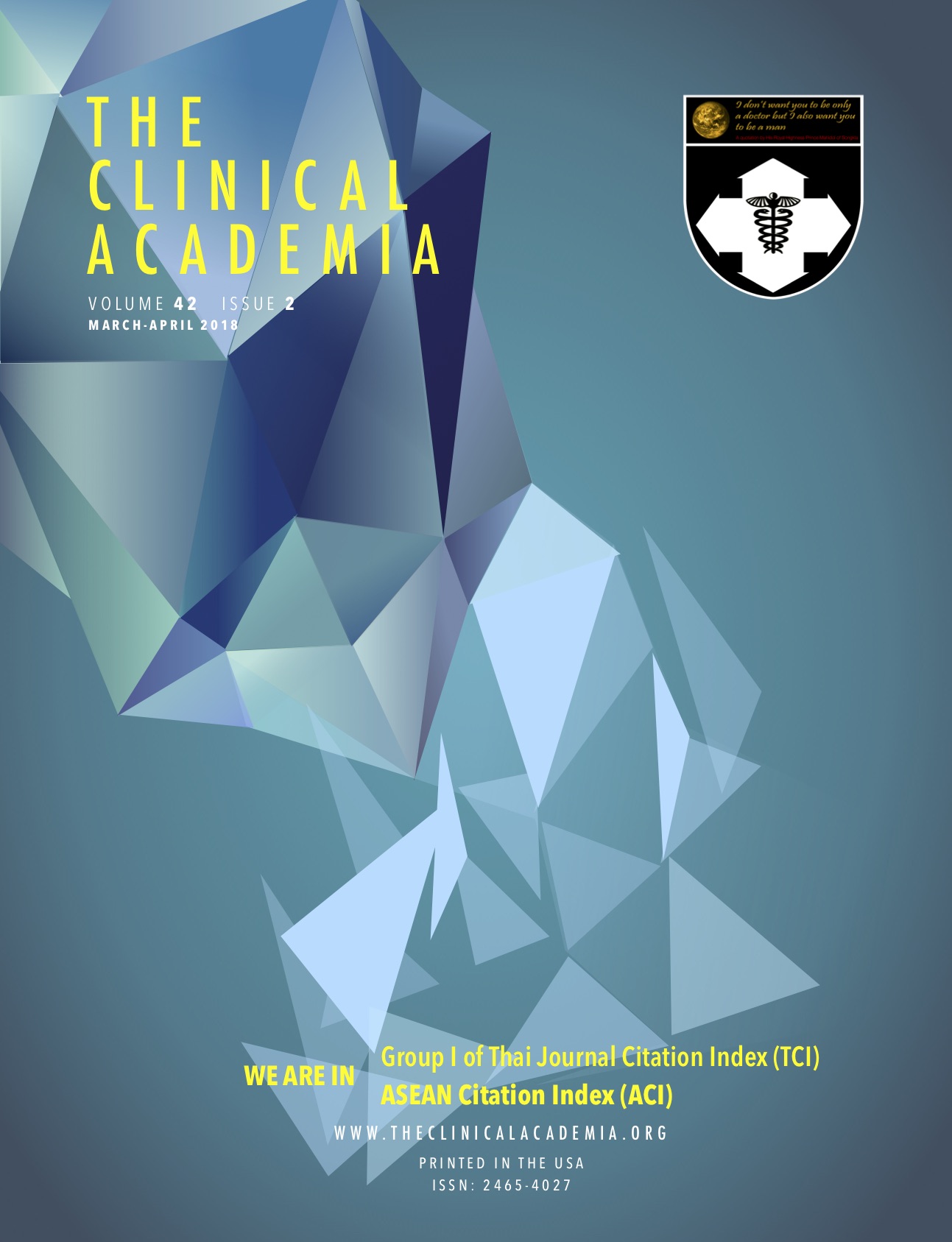Tramadol versus naproxen for pain relief in knee osteoarthritis: a pragmatic randomized controlled trial
บทคัดย่อ
OBJECTIVE
To compare the efficacy in term of pain relief between tramadol and naproxen in patients with knee osteoarthritis.
METHODS
We randomly assigned patients with knee osteoarthritis at Khon Kaen Hospital, Thailand to either tramadol or naproxen. The primary endpoint was the pain dimension of Western Ontario and Mcmaster Universities Osteoarthritis Index (WOMAC) at the end of two weeks, the higher scores indicating more severe symptoms. Our secondary endpoints included stiffness, and physical-function dimension of WOMAC scores as well as its total score, serum liver enzymes, creatinine, estimated glomerular filtration rate (eGFR), and their adverse events at the end of two weeks.
RESULTS
A total of 40 patients with knee osteoarthritis; 20 in the tramadol group and 20 in the naproxen group, were qualified for the intention-to-treat analysis. There were no statistically significant differences between the two groups regarding median change of pain of WOMAC score from baseline (-0.8; P=0.90). There was also no statistically significant difference in term of stiffness-WOMAC (0.4; P=0.95), physical function-WOMAC (-0.5; P=0.67), and the total score of WOMAC (2.0; P=0.97). There were no significant differences between the two treatment groups with respect to all secondary endpoints. The frequency of adverse events did not differ significantly between the two groups.
CONCLUSION
We found that the effect of pain relief of tramadol was similar to that of naproxen in knee osteoarthritis. (Thai Clinical Trials Registry (TCTR), 20180216003)



